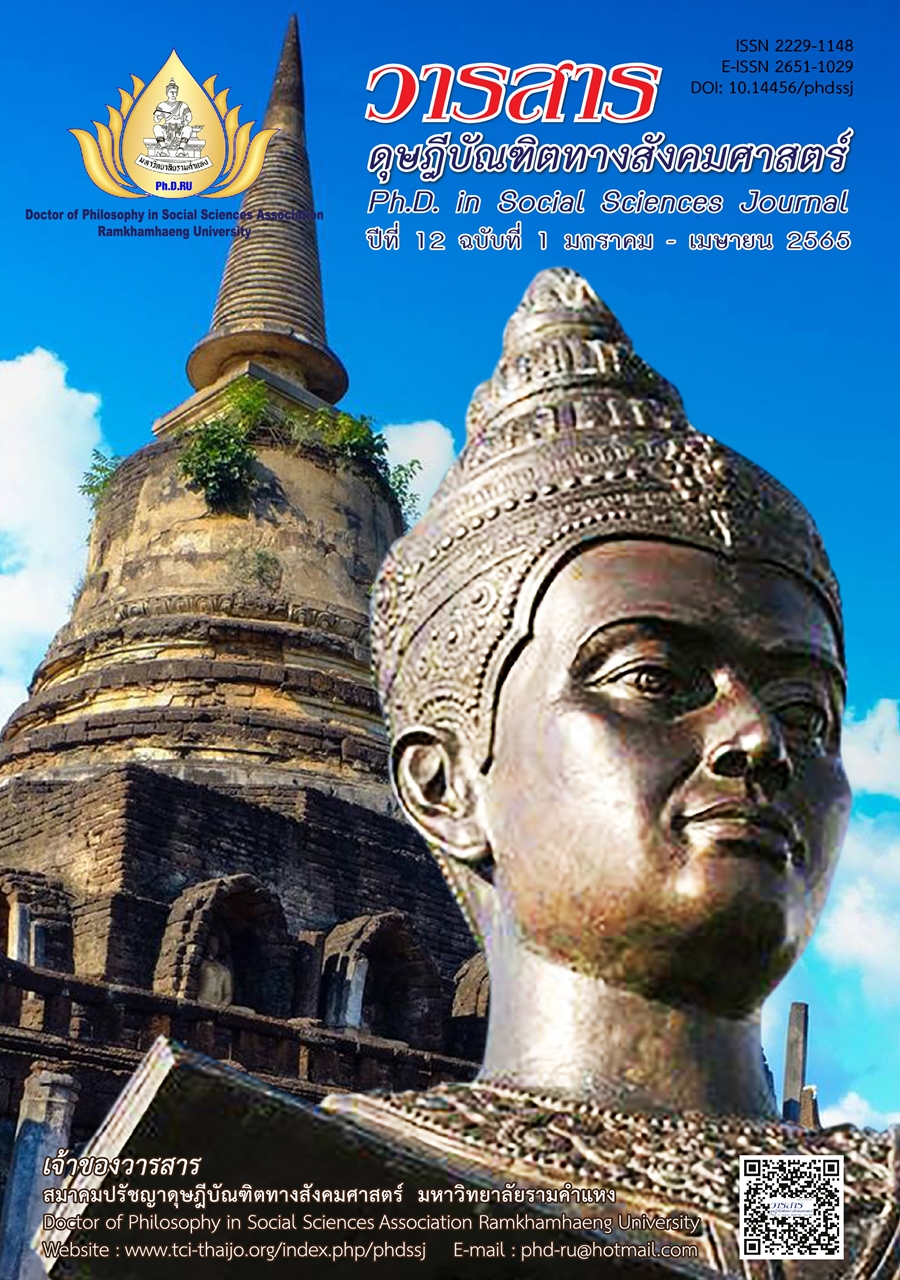Knowledge Exploration and Exploitation for Micro SMS in Upper Northern Thailand
Main Article Content
Abstract
This research aims to study customer co-creation’s knowledge, inherited knowledge, social network knowledge and the knowledge management model effecting micro-SME in upper northern Thailand. The participants are all micro-SME from 9 provinces in upper northern Thailand. The first three provinces were Chiang Mai, Chiang Rai, and Phrae by proportional allocation sample and purposive sampling in 280 entrepreneurs. The researcher uses descriptive statistics to describe the characteristics of the population and inferential statistical analysis of structural equation models.
The result of standard Fit index analysis is Chi-Square/df = 2.039, p-value = 0.000, RMR = 0.036, RMSEA = 0.059, GFI = 0.915 and CFI = 0.946 which is considered that empirical variables is suitable factor. The result of the test on factors that effect to dependent variable factor at significant level are (1) Customer co-creation’s knowledge effects to knowledge absorption factor at 0.243. (2) Inherited knowledge effects to knowledge absorption factor at 0.097. (3) Social network knowledge effects to knowledge absorption factor at 0.606. (4) Social network knowledge effects to knowledge utility at 0.415. (5) knowledge absorption factor effects to knowledge utilization at 0.405 and (6) Knowledge utilization effects to firm performance at 0.415.
Article Details

This work is licensed under a Creative Commons Attribution-NonCommercial-NoDerivatives 4.0 International License.
Academic articles, research articles, and book reviews in the Ph.D. in Social Sciences Journal are author’s opinions, and not the publisher’s, and is not the responsibility of the Ph.D. in Social Sciences Journal Philosophy Association, Ramkhamhaeng University. (In the case that research is done on human, the researcher has to be trained in Ethics for Doing Research on Human Training and has to produce the evidence of the training).
References
Agarwal, R., Echambadi, R., Franco, A. M., & Sarkar, M. B. (2004). Knowledge transfer through inheritance: Spin-out generation, development, and survival. Academy of Management Journal, 47(4), 501-522.
Anand, N., & Grover, N. (2015). Measuring retail supply chain performance: Theoretical model using key performance indicators (KPIs). Benchmarking: An International Journal, 22(1), 135-166.
Andolšek, D. M., & Andolšek, S. (2015). Knowledge sharing in an organization from the perspective of the individual. International Journal of Cognitive Research in Science, Engineering and Education, 3(2), 65-76.
Best, J. W. (1981). Research in education (4th ed.). Prentice Hall.
Bhatti, M. I., Awan, H. M., & Razaq, Z. (2014). The Key Performance Indicators (KPIs) and their impact on overall organizational performance. Journal of Quality & Quantity, 48(6), 3127-3143.
Byrne, B. M. (2013). Structural Equation Modeling with LISREL, PRELIS, and SIMPLIS: Basic concepts, applications, and programming. Psychology Press.
Chiangmai Provincial Offi ce. (2018). Chiang Mai Provincial development plan (2018-2022), Year 2022 review edition. Retrieved from http://www.chiangmai.go.th/managing/public/D2/2D28Apr2021143603.pdf [In Thai]
Cohen, W. M., & Levinthal, D. A. (1990). Absorptive capacity: A new perspective on learning and innovation. Administrative Science Quarterly, 35(1), 128-152.
Dayan, M., Di Benedetto, C. A., & Colak, M. (2009). Managerial trust in new product development projects: Its antecedents and consequences. R&D Management, 39(1), 21-37.
De Silva, M., & Rossi, F. (2017). The effect of fi rms’ relational capabilities on knowledge acquisition and co-creation with universities. Technological Forecasting and Social Change, 133, 72-84.
Del Giudice, M., & Maggioni, V. (2014). Managerial practices and operative directions of knowledge management within inter-fi rm networks: A global view. Journal of Knowledge Management, 18(5), 841-846.
Gay, L. R., & Airasian, P. (1992). Education research: Competence for analysis and application. Merrill.
Gemser, G., & Perks, H. (2015). Co-creation with customers: An evolving innovation research field. Journal of Product Innovation Management, 32(5), 660-665.
Gerbing, D. W., & Anderson, J. C. (1984). On the meaning of within-factor correlated measurement errors. Journal of Consumer Research, 11(1), 572-580.
Gibbons, M., Limoges, C., Nowotny, H., Schwartzman, S., Scott, P., & Trow, M. (1994). The new production of knowledge, The dynamics of science and research in contemporary societies. Sage.
Hair, J. F., Black, W. C., Babin, B. J., & Anderson, R. E. (2010). Multivariate data analysis: A global perspective (7th ed.). Pearson Education.
Hamlin, R. G., Ellinger, A. D., & Beattie, R. S. (2008). The emergent ‘coaching industry’: A wake-up call for HRD professionals. Human Resource Development International, 11(3), 287-305.
Hoarau, H. (2014). Knowledge acquisition and assimilation in tourism-innovation processes. Journal Scandinavian Journal of Hospitality and Tourism, 14(2), 35-151.
Hu, L.-T., & Bentler, P. M. (1999). Cutoff criteria for fi t indexes in covariance structure analysis: Conventional criteria versus new alternatives. Structural Equation Modeling, 6(1), 1-55.
McKelvie, G., Dotsika, F., & Patrick, K. (2007). Interactive business development, capturing business knowledge and practice: A case study. The Learning Organization, 14(5), 407-422.
Nonaka, I., & Toyama, R. (2003). The knowledge creating theory revisited: Knowledge creation as a synthesis. Knowledge Management Research & Practice, 1(1), 2-10.
Organization for Economic Co-operation and Development. (1997). Globalization and Small and Medium Enterprises (SMEs). Author.
Piriyakul, I., Piriyakul, R., & Maharutaiyanon, A. (2017). Identifi cation of brand image from the customer experience and comments of Thai brand fan pages. Kasem Bundit Journal, 18(1), 201-218.
Schermelleh-Engel, K., Moosbrugger, H., & Müller, H. (2003). Evaluating the fi t of structural equation models: Tests of signifi cance and descriptive goodness-of-fi t measures. Methods of Psychological Research Online, 8(2), 23-74.
Zaim, H., Muhammed, S., & Tarim, M. (2019). Relationship between knowledge management processes and performance: Critical role of knowledge utilization in organizations. Knowledge Management Research & Practice, 17(1), 24-38.


